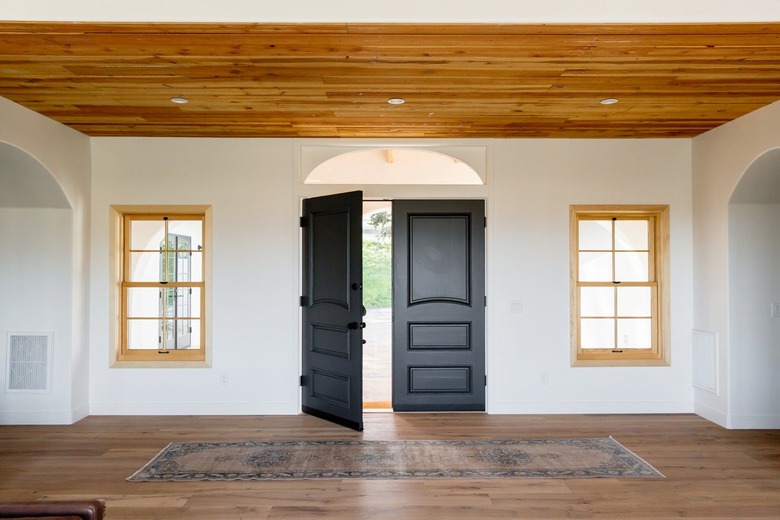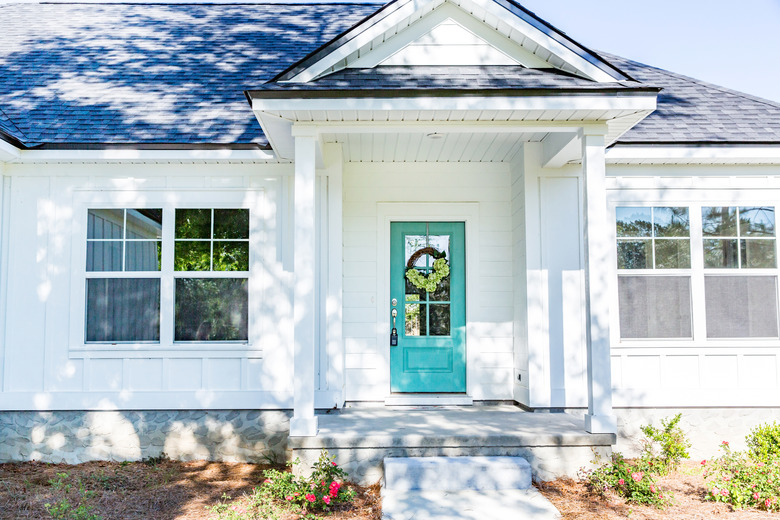Touring A House During COVID-19: What You Need To Know
The COVID-19 pandemic has changed open houses dramatically, even canceling them in some areas, and in their place, virtual tours have become as well-established as Zoom teleconferencing has become in the workplace. Remote viewing options include Facebook and Skype as well as a number of more sophisticated options intended specifically for real estate agents, including Immoviewer and FloorPlanOnline, which allow agents to create 3-D 360-degree video tours for buyers, and Kleard, which is a similar service geared toward rental properties.
Virtual touring is a sure-fire way to social distance and stay safe, and it has become so prevalent that it will likely stick around long after the coronavirus pandemic is over. It isn't a substitute for the visceral experience you can only get by visiting a property in person, however, and for homebuyers for whom a home purchase is the biggest investment they will ever make — which is most — an actual physical tour is a necessity before making an offer. Because of this, real estate agents continue to conduct COVID-safe in-person home tours in places where a stay-at-home order is not in effect.
The National Association of Realtors (NAR), citing guidelines from the Centers for Disease Control and Prevention (CDC) and the president, established a set of rules for realtors to follow while conducting in-person house tours. If you go on such a tour, you can expect the experience to be different than it was in pre-COVID days, but that shouldn't be a surprise since most social experiences are different.
Open Houses During the COVID-19 Pandemic
Open Houses During the COVID-19 Pandemic
Unlike pre-pandemic days, you can't just show up at an open house without an appointment, at least not in California, and many other states have followed suit. According to guidelines released by the California Departments of Public Health and Cal/OSHA, open houses are prohibited, but in practice, showings are just more tightly regulated. Prospective buyers either have to make an appointment or digitally sign in at a showing and sign a Property Entry Advisory and Declaration form to free the real estate agents and property owners from liability in case anyone contracts COVID.
Most states publish a set of guidelines for agents to follow. Some states, such as California, consider them rules, while others, such as Florida, consider them merely advisory. In most states, however, these three guidelines are the same:
- Maintain social distance of at least 6 feet while inside the property. To guarantee social distancing, the NAR guidelines limit the number of people inside a property at one time to 10 people and advise agents to allow only one buyer group inside at any one time.
- Wear masks or face coverings at all times while inside the home.
- Use hand sanitizer and remove shoes or wear protective shoe coverings while inside and avoid touching anything. Some agents will turn on all the lights and open all the cupboard and closet doors so prospective buyers don't have to touch them. After the showing, the agent uses disinfectant to clean doorknobs and areas that visitors may have touched.
Open House Etiquette During COVID-19
Open House Etiquette During COVID-19
Regulations and guidelines aside, it's incumbent on everyone who participates in home tours to act responsibly to ensure their own safety as well as that of agents, sellers and the occupants of the house that is being shown. Occupants are not typically present during a home showing, and when they return, they are entitled to a house as clean and virus-free as it was when they left it. These etiquette rules are common sense rules, though they may be unfamiliar to anyone who hasn't attended a house showing during the pandemic:
- Take advantage of virtual home showings and book a physical showing only if you're a serious buyer. It's a good idea to get preapproved for a loan before you show up, and many agents will decline to conduct a physical showing for a buyer who isn't prequalified at a minimum.
- Stay away if you have a cough or fever or if you're feeling sick. Most agents will take your temperature before you enter the home, but to be on the safe side, take your own temperature at home before you come. You should also stay away if you've been in contact with anyone who has tested positive for the coronavirus within the last few days.
- Observe all safety instructions provided by the agent showing the property, including disinfecting your hands, wearing a face covering, leaving your shoes at the door or putting on shoe coverings and maintaining social distance while inside.
- Don't enter the house until you are invited to do so by the real estate agent showing the property. Make the most of your time inside the home by asking your agent relevant questions, and if you want to test faucets or appliances, ask the agent showing the home to do it for you.
- Do not insist on a personal showing if a state executive order prohibiting indoor gatherings is in effect unless there's absolutely no alternative. If an agent complies with your request, which may happen if there's enough motivation to sell, you could be putting the agent and yourself at risk not to mention the current occupants of the home. It's safer to wait for the showing until after the executive order has been lifted.
Take the Virtual Tours
Take the Virtual Tours
The NAR gives realtors plenty of latitude to decline physical showings, asserting that no agent has a duty to put himself at risk of contracting COVID, and that's especially true in places where an executive order or stay-at-home order is in effect. That means even if you want a physical showing of a property, you might not be able to arrange one, especially if the house is occupied by renters. In such cases, the agent will have prepared a virtual tour of the property, and that will have to do. That doesn't mean that you can't get at least some hands-on experience of the property and the neighborhood.
Hop in the car and take a drive around the neighborhood. Park the car and walk by the house. The fence may prevent you from seeing anything other than the front of the building and the landscaping, but that, coupled with the information you have gleaned from a virtual walk-through, might tell you all you need to know about the condition of the property and the surrounding environment. A neighborhood walk-through is almost a prerequisite even if you are able to tour the house, so you'll be observing as much due diligence as the situation allows.
Everyone knows the homebuying process should be as transparent as possible, so if you decide to make an offer based on the virtual tours, it's possible that the seller will consider a contract addendum that makes the offer contingent on a pre-inspection walk-through. Upon accepting the offer, the seller would agree to make the necessary arrangements to prepare the property and temporarily vacate the occupants for the short time it takes you to physically inspect the premises and ratify the contract. When conducted in good faith by all parties, this type of arrangement is one way to work around the restrictions imposed by a most unforgiving viral adversary.
References
- California Regional MLS: What Is the PEAD Form Released by the California Association of Realtors?
- National Association of Realtors: Open House Guidance During COVID-19
- Rocket Mortgage: The Evolution Of Showing Homes During COVID-19
- Ventura County Star: Serious Buyers Only: Local Agents Require Virtual Tours Before Showing Homes
- Florida Realtors: COVID-19 Open House Guide

